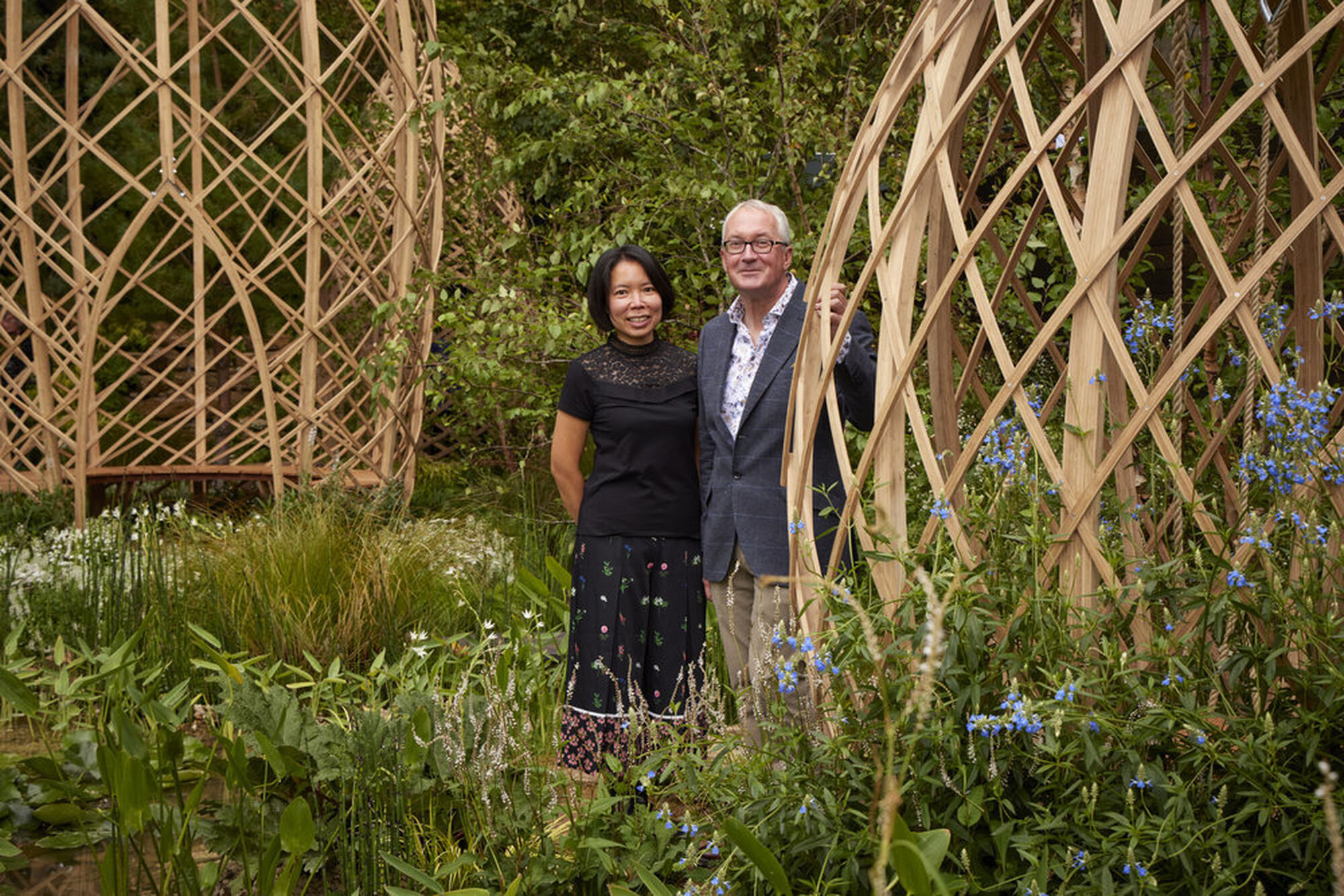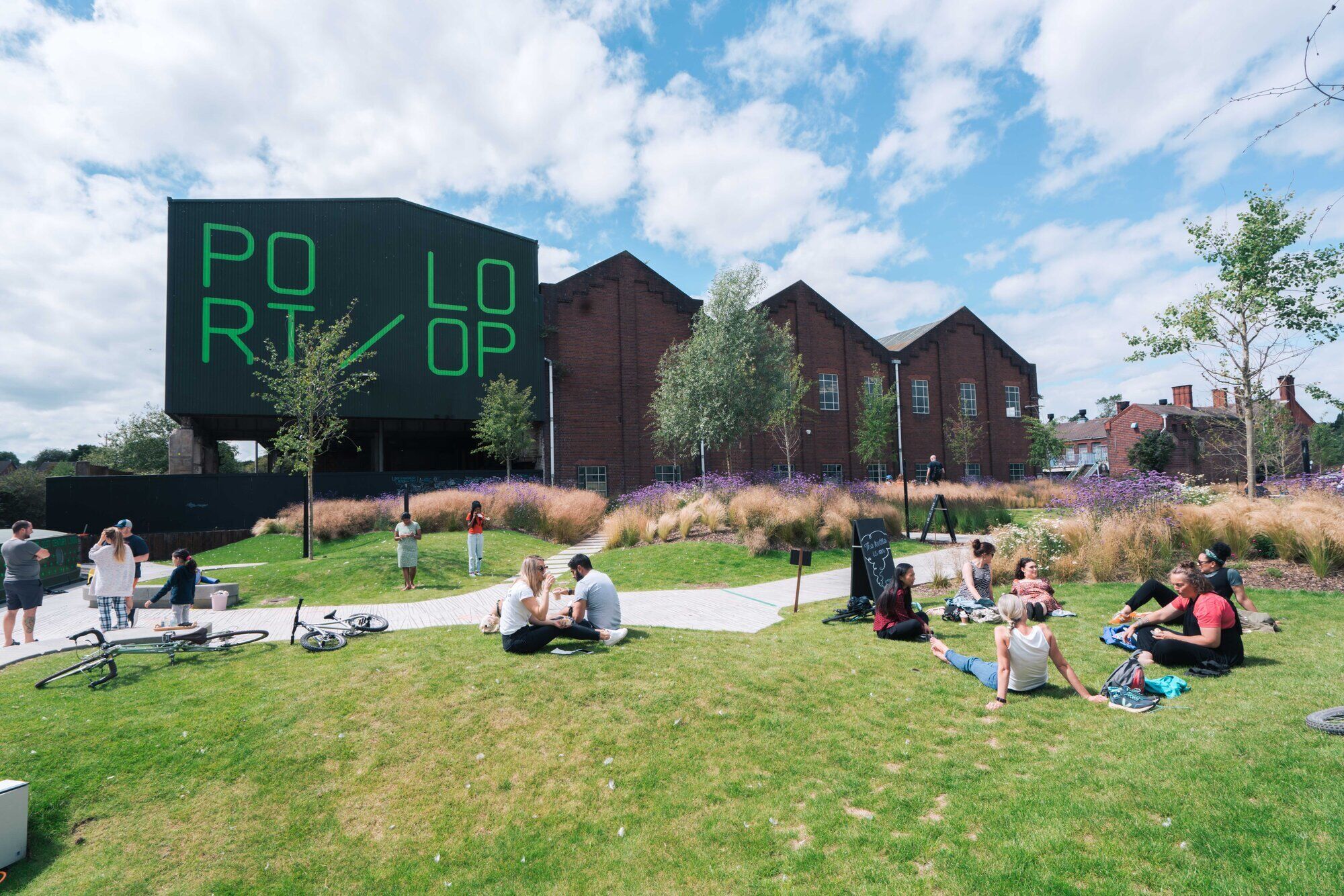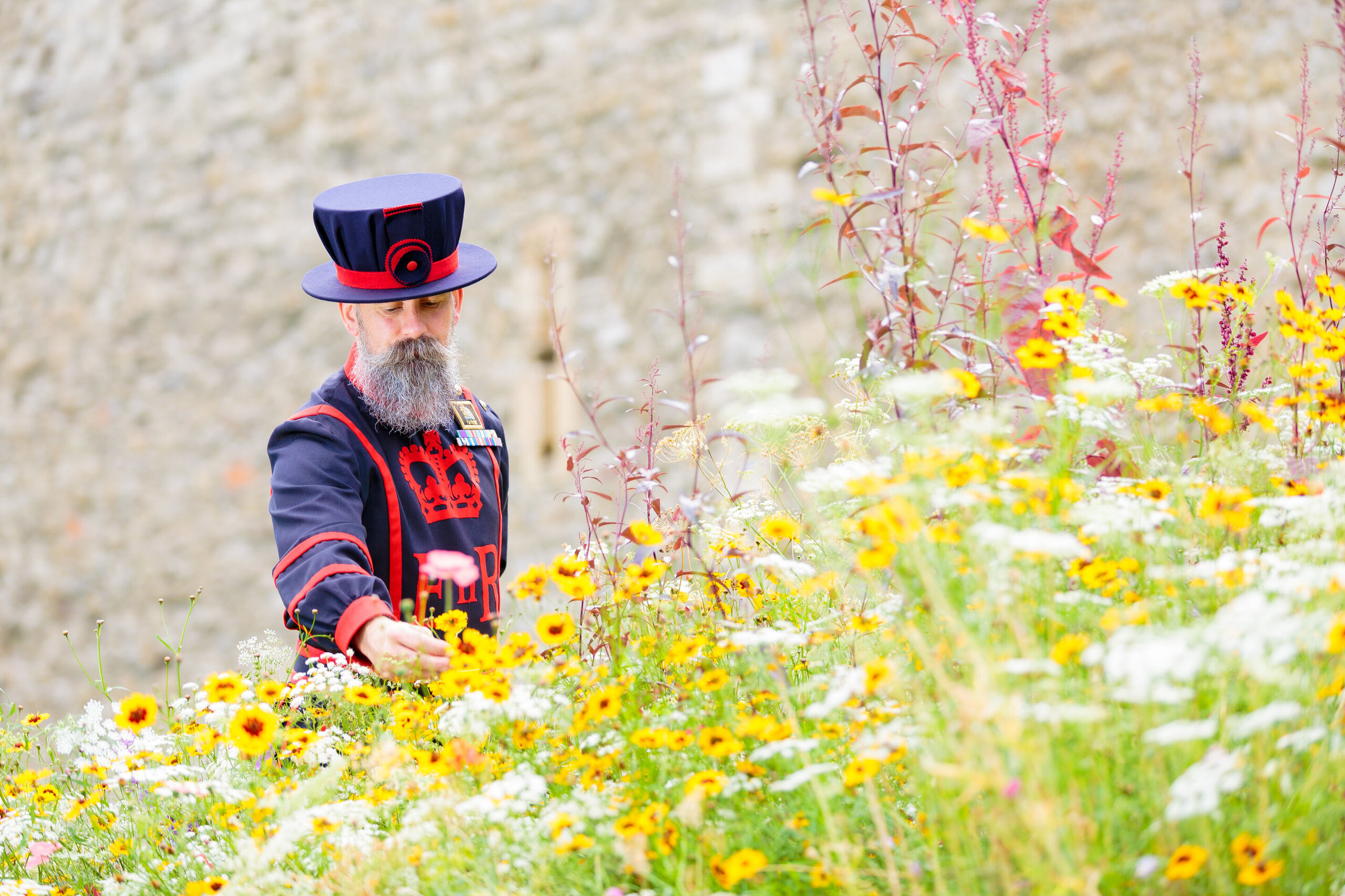

Grant Associates to collaborate with Historic Royal Palaces for Tower of London Platinum Jubilee plans
The moat at the Tower of London is set to be encircled by millions of flowers next summer to celebrate the Platinum Jubilee of Her Majesty The Queen.
Historic Royal Palaces (HRP) have officially announced plans for The Tower’s ‘Superbloom’ celebration project, to be brought to life in joint partnership with award-winning landscape architecture practice Grant Associates and the University of Sheffield’s Professor of Planting Design, Nigel Dunnett – both of whom have extensive expertise in urban horticulture and landscape design.
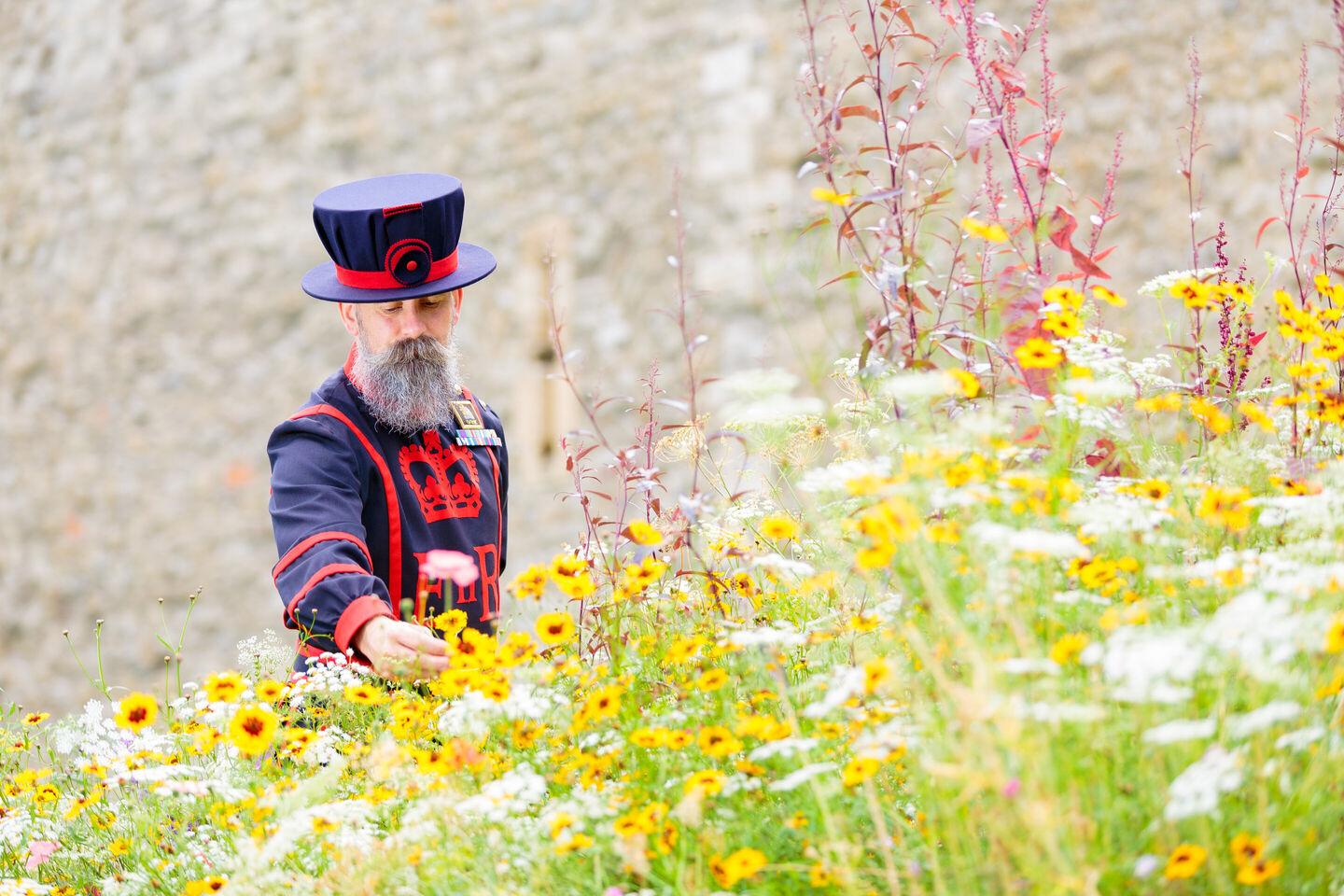
After a year of extensive testing and planning, 20 million carefully selected seeds will be sown in the moat in spring 2022, creating a vibrant sea of flowers which will continuously evolve from June to September, changing colours and patterns throughout the summer. For the first time, the space will be open every day for visitors to explore and see the spectacle of the flowers close-up, as the moat, which was built in the 13th century to keep people out of the Tower, becomes a welcoming new habitat for pollinators and seed-eating birds. The Tower’s ‘Superbloom’ will be the first stage of a transformation of the moat into a new natural landscape in the heart of the City of London, replacing the current lawn permanently.
We’re thrilled to be bringing some joy, colour and spectacle to the Tower in 2022, in celebration of Her Majesty’s Platinum Jubilee. Everyone at the Tower is looking forward to sharing the project with everyone as it develops – and hoping for some luck with the weather next spring! We hope that this thriving new landscape, surrounding London’s formidable fortress, will celebrate the power of nature to unite us all.
Grant Associates, the Bath-based international practice behind 2021’s Best Show Garden at the Chelsea Flower Show, The Guangzhou Garden, and the world-renowned Gardens by the Bay in Singapore, is taking a collaborative role in designing the overall visitor experience and technical design concept for the project, including the sequencing of experiences and flowering effects as visitors move around the moat.
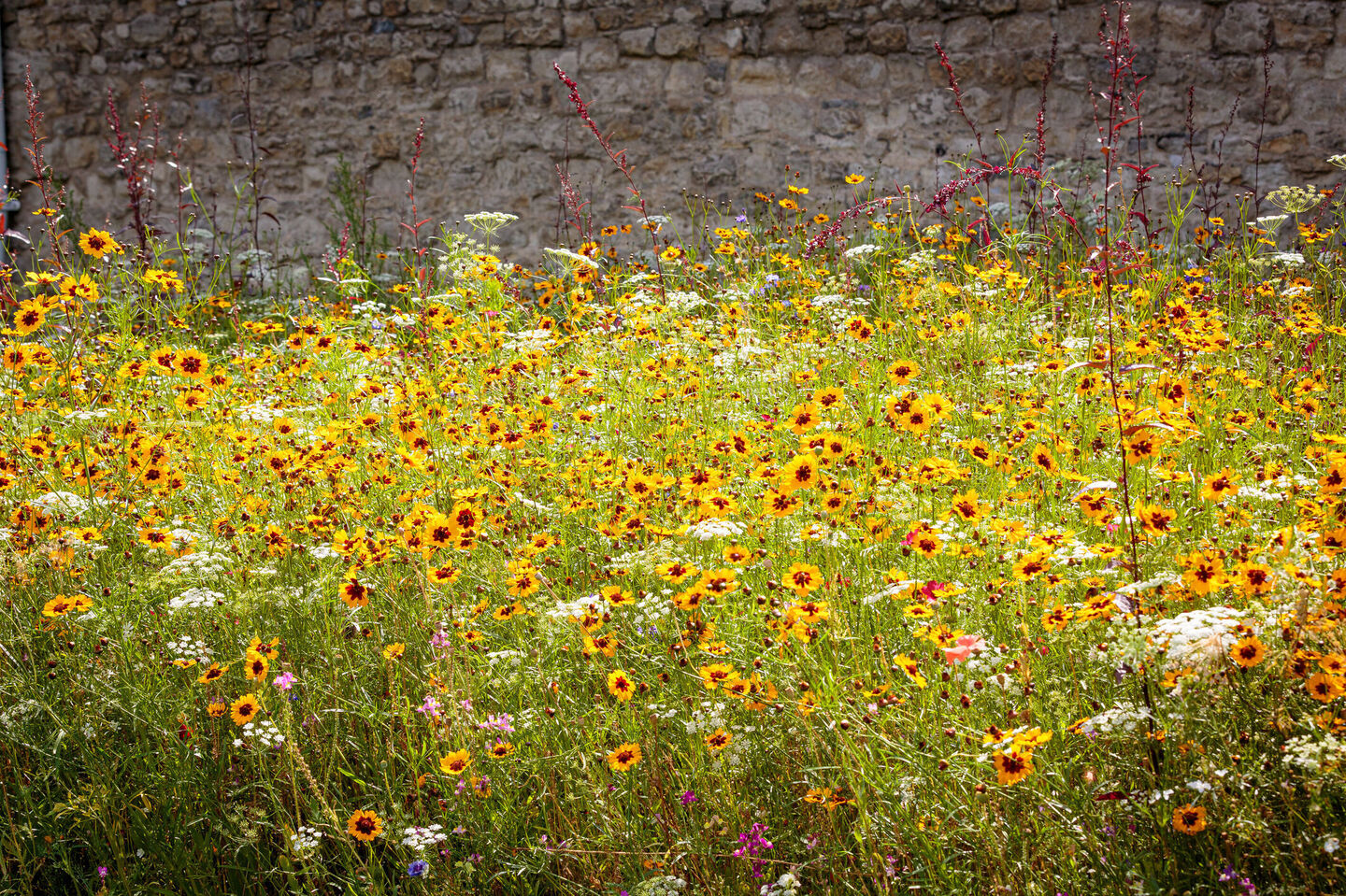
The prospect of transforming the Tower of London moat from barren amenity grassland into a spectacle of nature was irresistible and we look forward to seeing this historic evolution unfold over the coming months. This is set to be a highly significant transformation - one that will build on the moat’s legacy to create a nature-rich, sustainable landscape for the benefit of both biodiversity and the communities of the Tower, Tower Hamlets, London and all future visitors. We anticipate this bold intervention will be a catalyst for many other transformational projects across the country, bringing colour and life to renew our urban neighbourhoods.
In recent years, the Tower’s moat is best known for being the setting for two major commemorations of the Centenary of the First World War: the 2014 ‘Poppies’ and 2018 ‘Flames’ installations. However, the space has had many uses in its long history. It has housed a medieval orchard, a grazing ground for Victorian livestock, and even allotments during the Second World War. As recently as 1977, the moat was used to mark HM The Queen’s Silver Jubilee with a garden display. In 2022, the ‘Superbloom’ will take inspiration from this long history, bringing nature back to the Tower’s urban landscape.
When the flowers are flourishing, the ‘Superbloom’ will bring spectacular natural beauty to the feet of the Tower’s ancient walls, and it will introduce a new habitat for wildlife. The planting scheme will create a significant new and much needed resource for pollinators and seed-eating birds. Early tests in summer 2021 have already demonstrated the power of even a small number of flowers to increase the biodiversity in the moat.
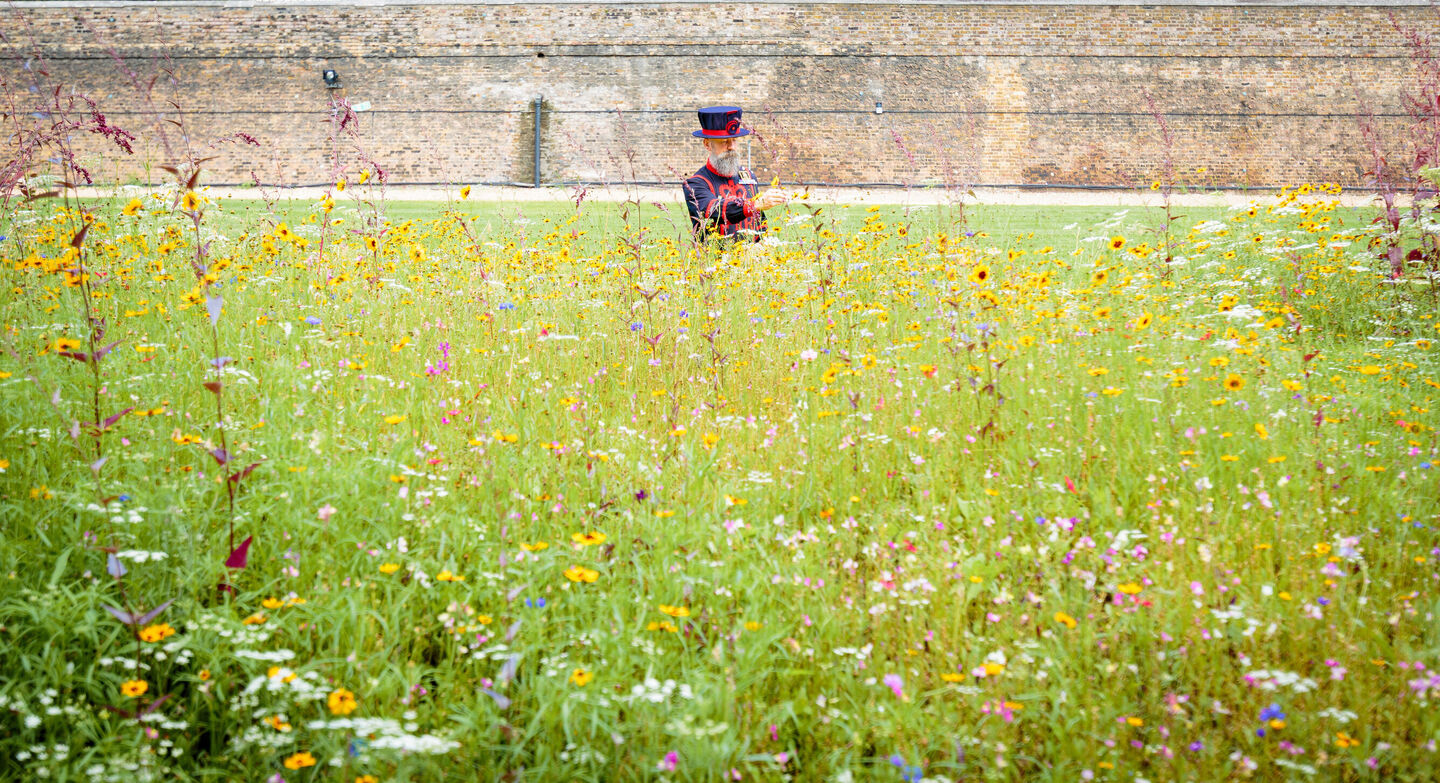
An explosion of colour within London’s urban landscape, the Tower’s ‘Superbloom’ will also shine a spotlight on nature’s value to our wellbeing. The positive impact of green space on health is widely recognised and the pandemic has highlighted its importance. It is hoped that the transformation of the moat – a previously underused space – will inspire similar positive change across the country. Schoolchildren are being invited to take part in a major schools initiative to support the project; growing their own displays, created from a special palette of seeds, to bloom alongside the one at the Tower – and learning about what gardens can do to improve sustainability and support ecology as part of that process.
The Superbloom will be seeded in March 2022 and open in June 2022, but work to prepare for its installation has already begun this Autumn. Tickets for the display will go on sale on 6th December 2021.
The Superbloom and schools initiative have been made possible by the support of a number of generous donors, Platinum Partner sponsors Freshields Bruckhaus Deringer, Rothschild & Co and Schroders, and a number of City of London livery companies including the Grocers, Drapers, Fishmongers and Clothworkers.
Historic Royal Palaces also plans to host smaller floral displays across its other sites – including at Hampton Court Palace, Kensington Palace and Hillsborough Castle, to mark Her Majesty The Queen’s Platinum Jubilee.
For further information, please contact the HRP Press Office: press@hrp.org.uk / 020 3166 6166

